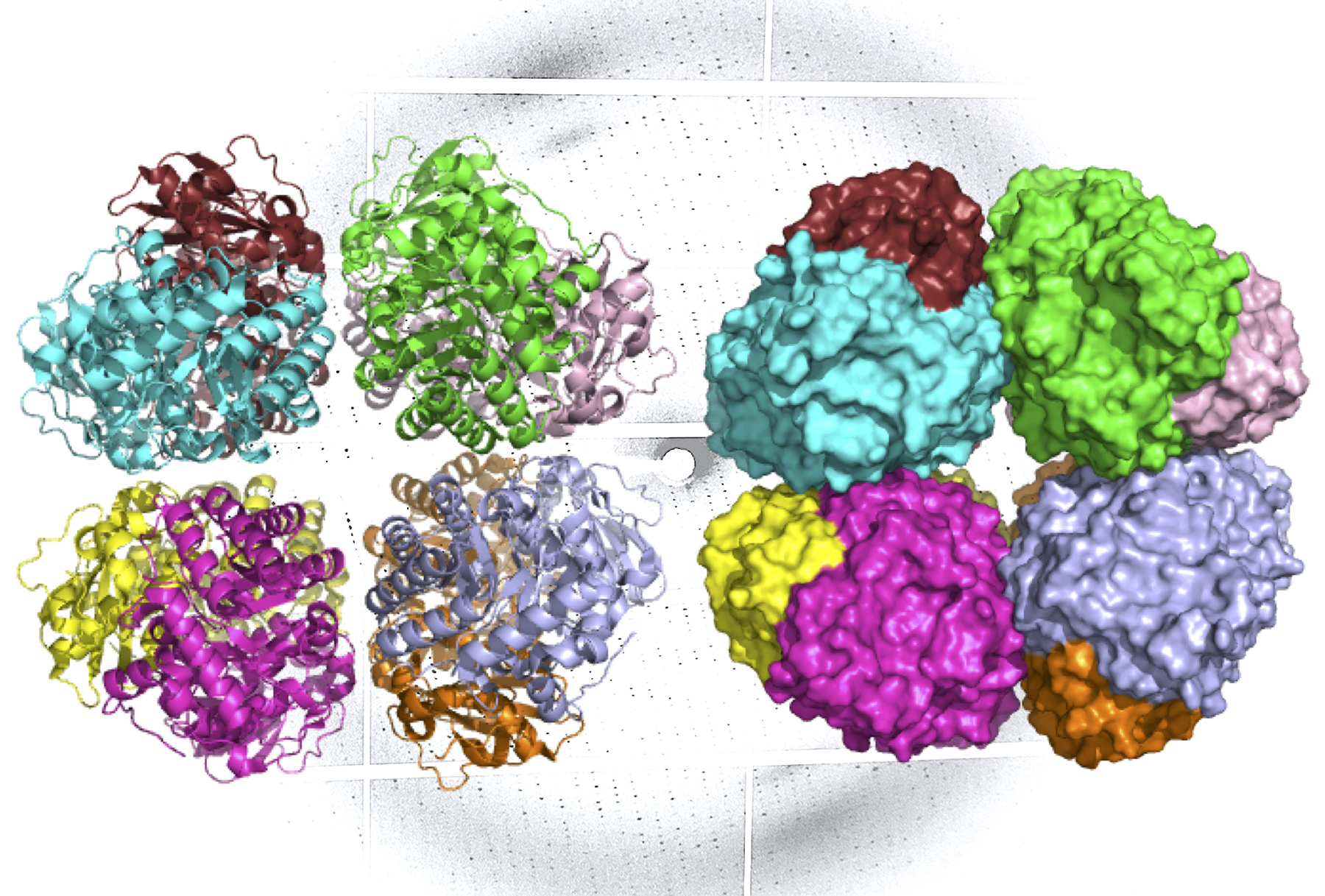Rubisco is one of the oldest carbon-fixing enzymes on the planet, taking CO2 from the atmosphere and fixing it into sugar for plants and other photosynthetic organisms. Form I (“form one”) rubisco goes back nearly 2.4 billion years and is a key focus of scientists studying the evolution of life as well as those seeking to develop bio-based fuels and renewable-energy technologies. A newly discovered form of rubisco—dubbed form I′ (“one prime”)—is thought to represent a missing link in the evolution of photosynthetic organisms, potentially providing clues as to how this enzyme changed the planet.
To learn how form I′ rubisco compares to other rubisco enzymes, researchers performed x-ray crystallography at Advanced Light Source (ALS) Beamline 8.2.2. Then, to capture how the enzyme’s structure changes during different states of activity, they applied small-angle x-ray scattering (SAXS) using Beamline 12.3.1 (SIBYLS). This combination of approaches enables scientists to construct unprecedented models of complex molecules as they appear in nature.
Form I rubisco is built from eight large molecular subunits, with eight small subunits perched above and below. Form I′ rubisco also has eight large subunits, but the small subunits—previously considered essential for productive carbon fixation—are absent. Details of the structure suggest that a tradeoff between stability and catalytic activity spurred the evolution of the small subunit. Following the success of the structural investigation into form I′ rubisco, the team plans to apply their complementary approach to studies of other crucial plant enzymes, including additional forms of rubisco.

D.M. Banda, J.H. Pereira, A.K. Liu, D.J. Orr, M. Hammel, C. He, M.A.J. Parry, E. Carmo-Silva, P.D. Adams, J.F. Banfield, and P.M. Shih, “Novel bacterial clade reveals origin of form I Rubisco,” Nat. Plants 6, 1158 (2020), doi:10.1038/s41477-020-00762-4.
Adapted from the Berkeley Lab news release, “Study Finds ‘Missing Link’ in the Evolutionary History of Carbon-Fixing Protein Rubisco.”